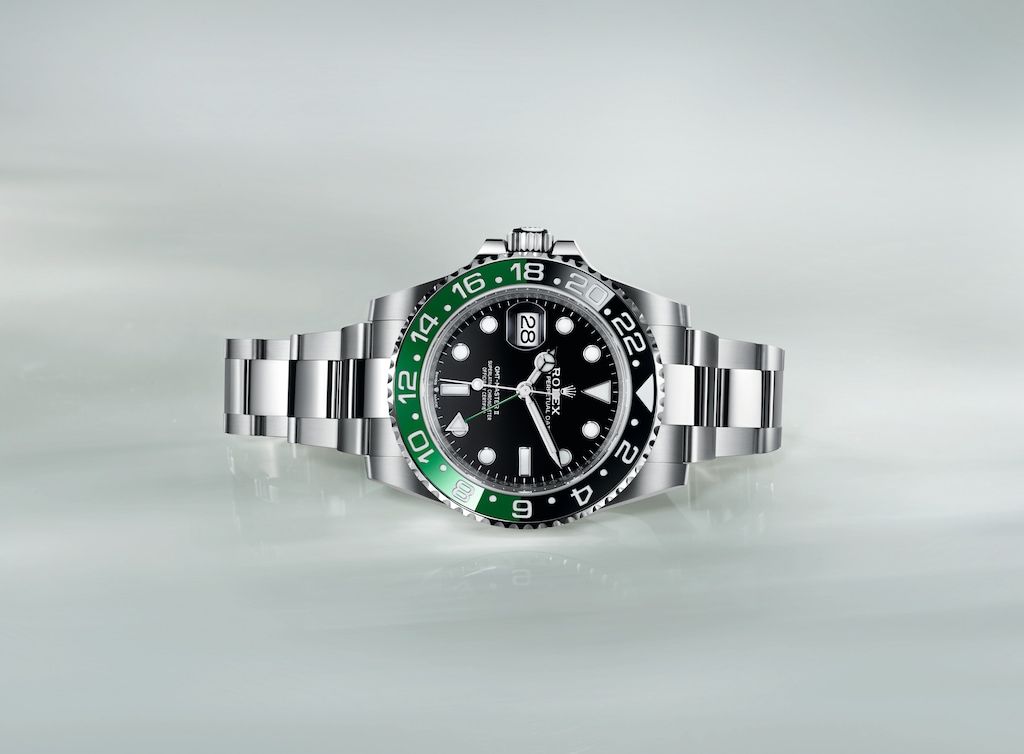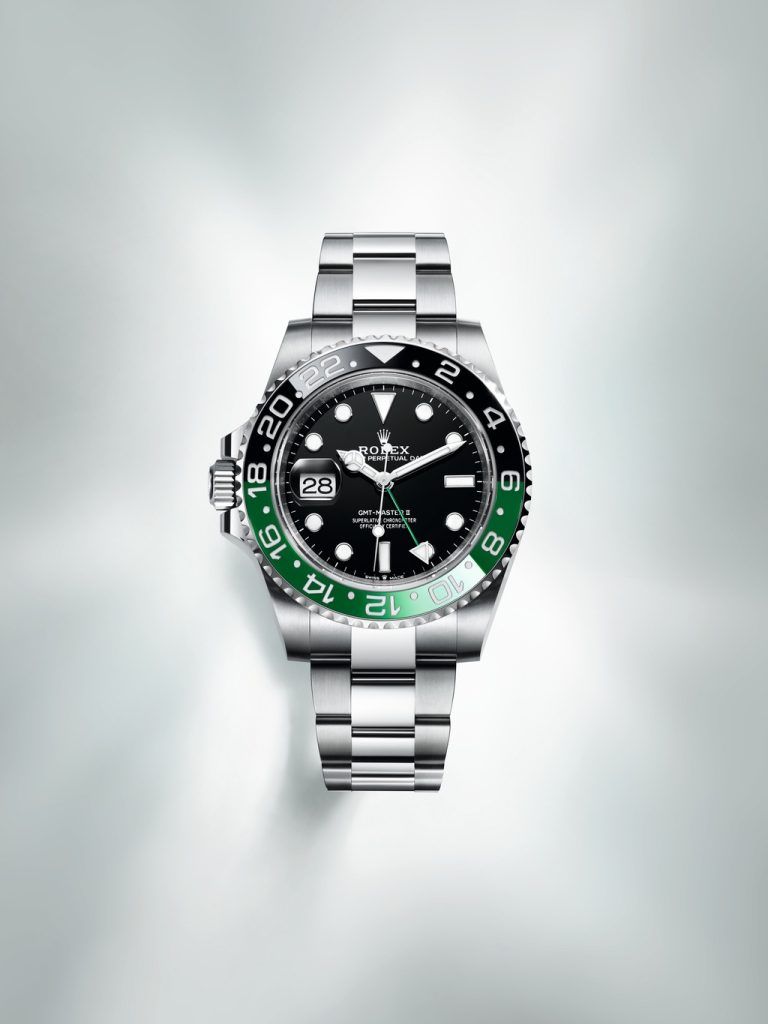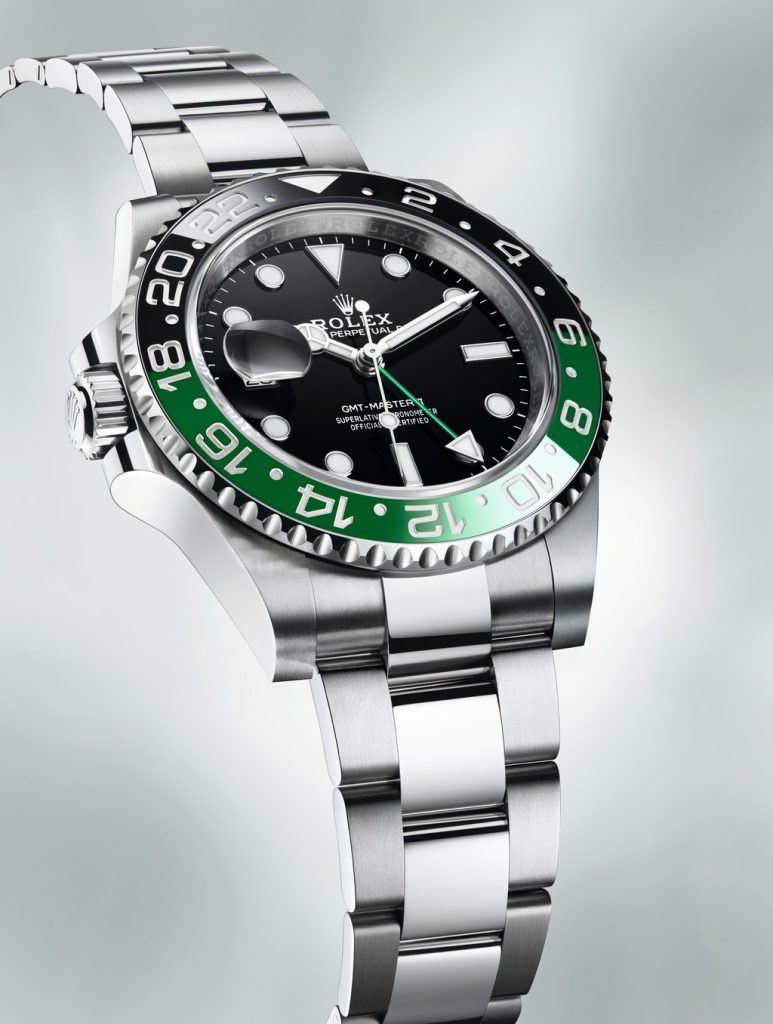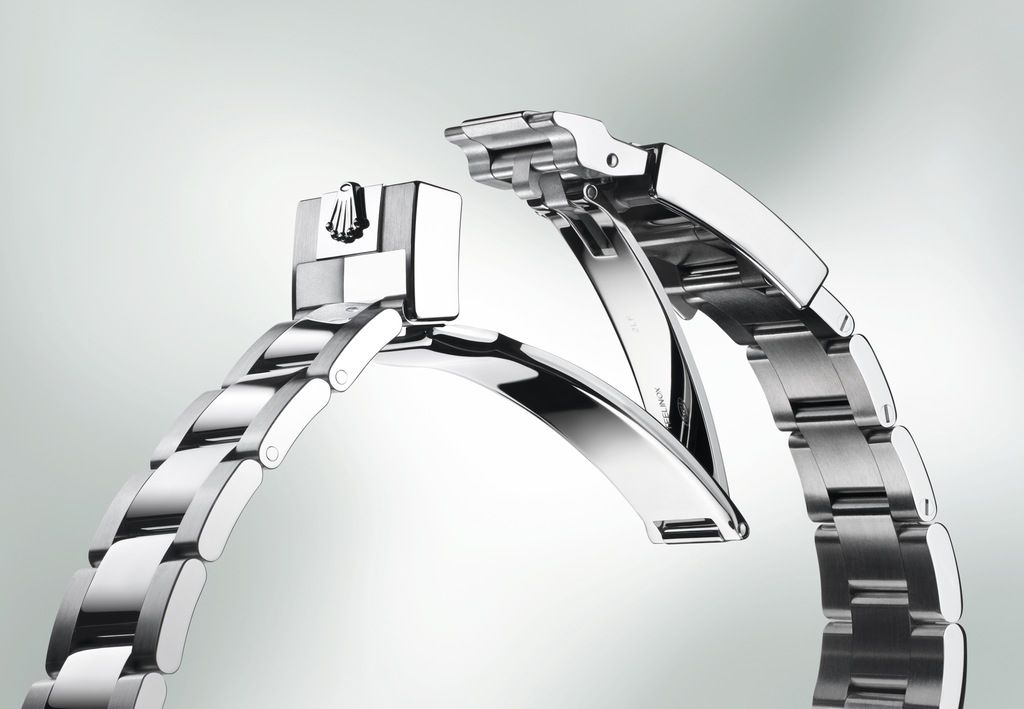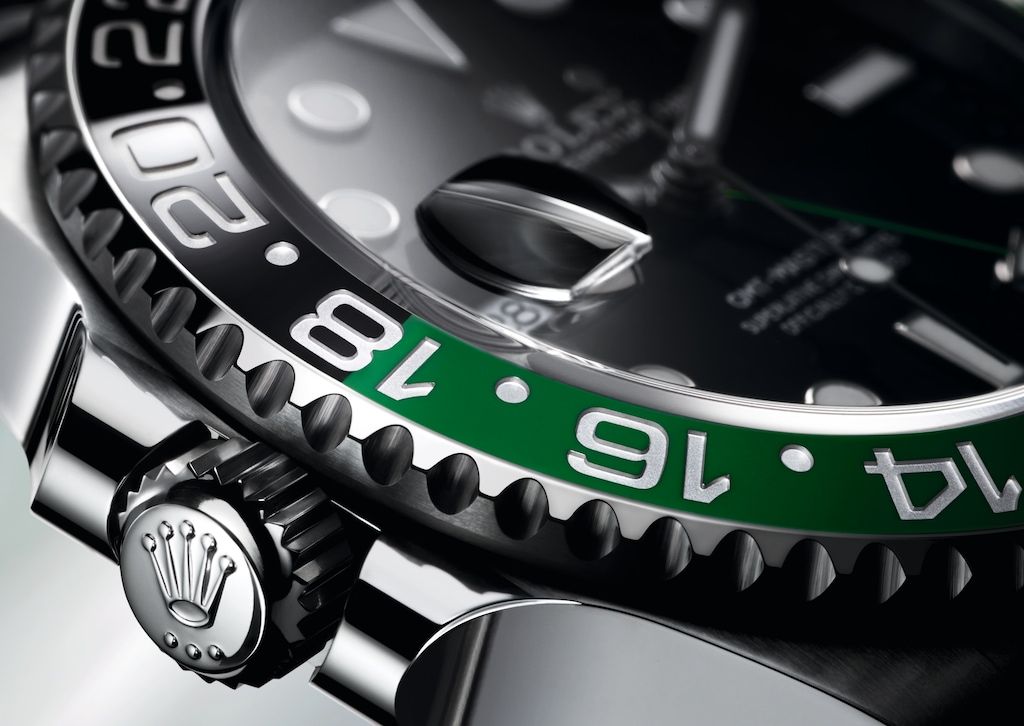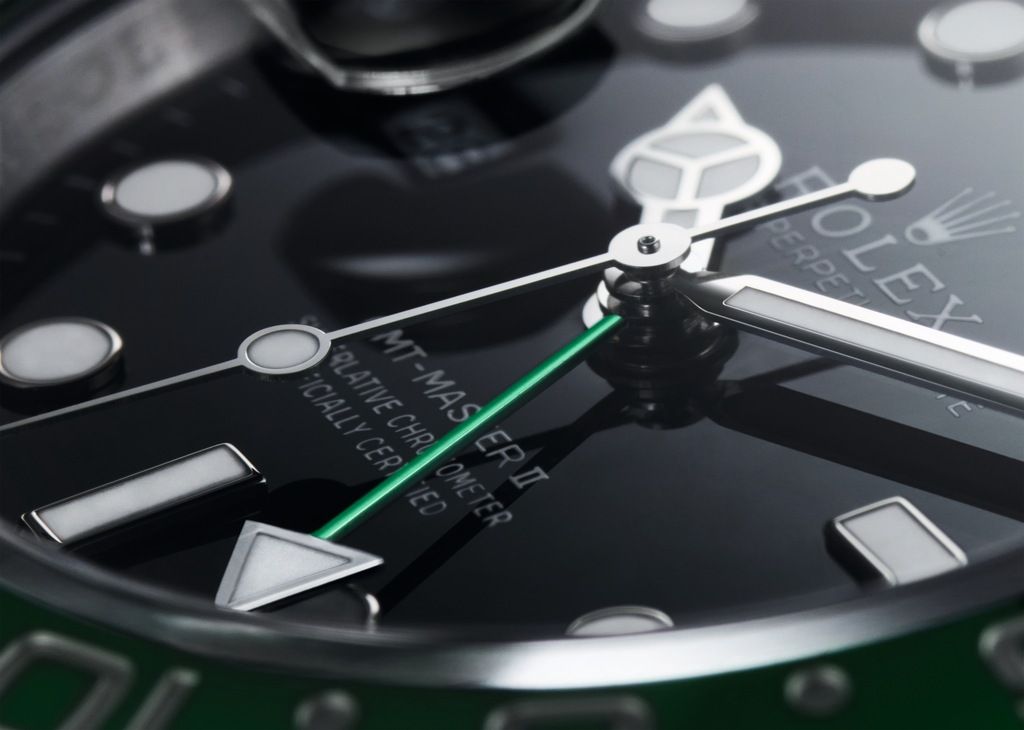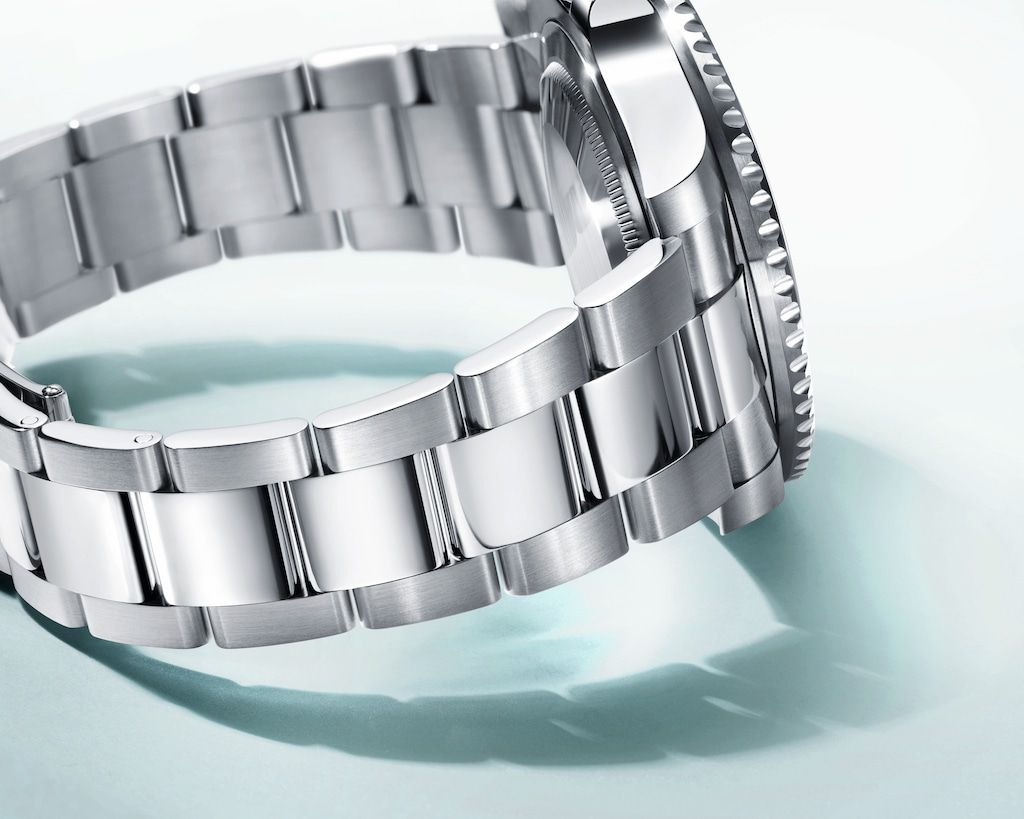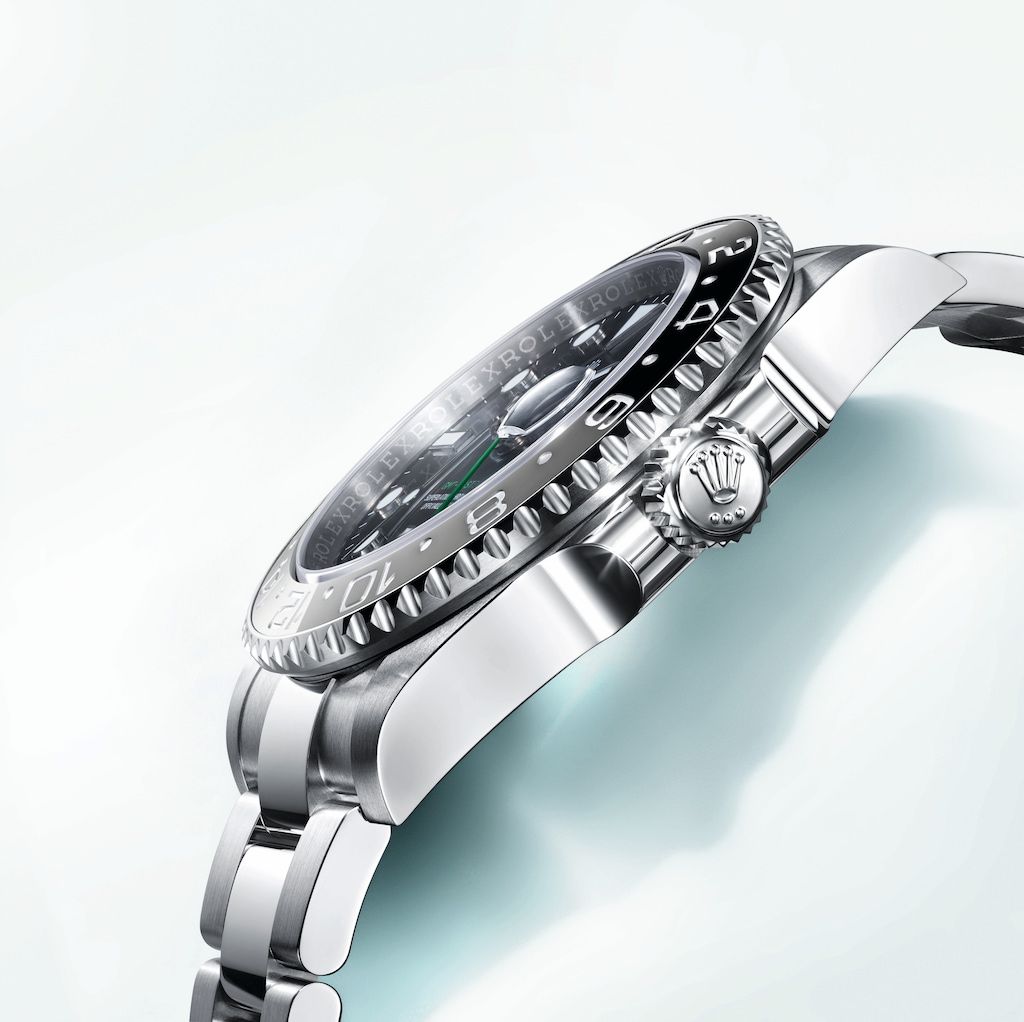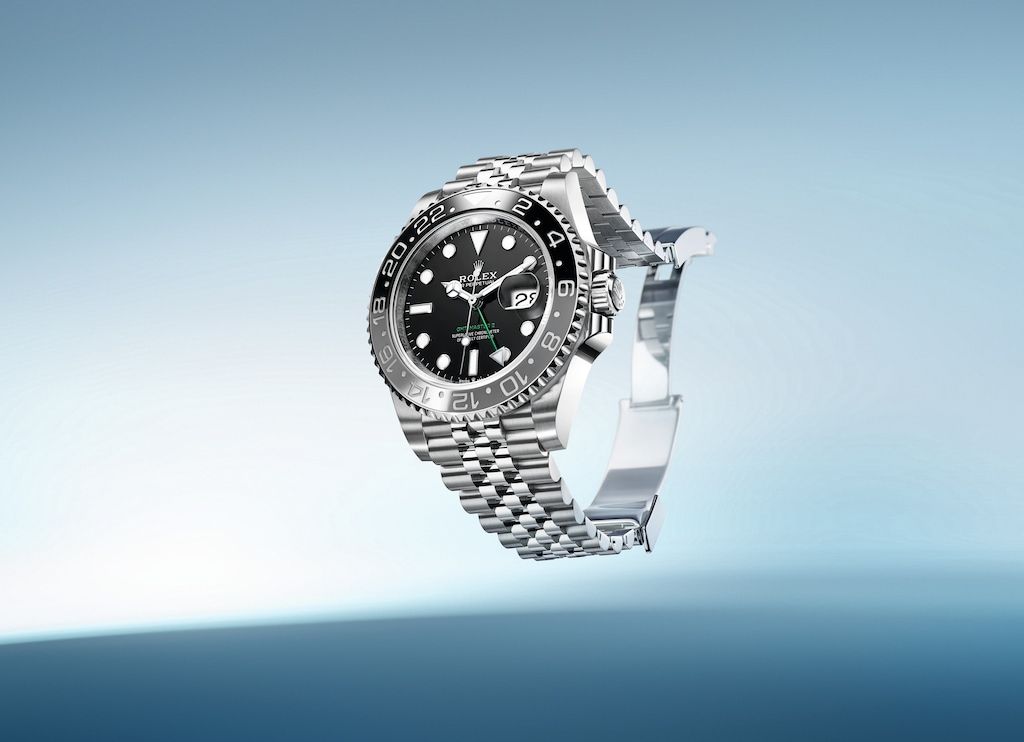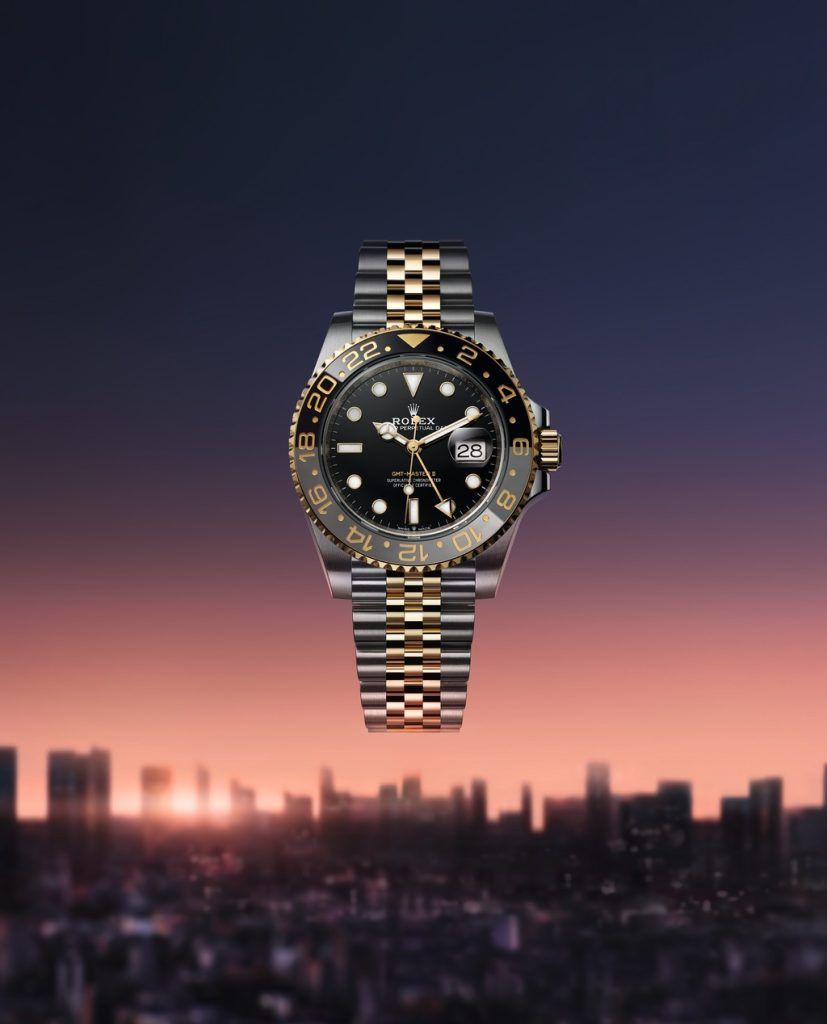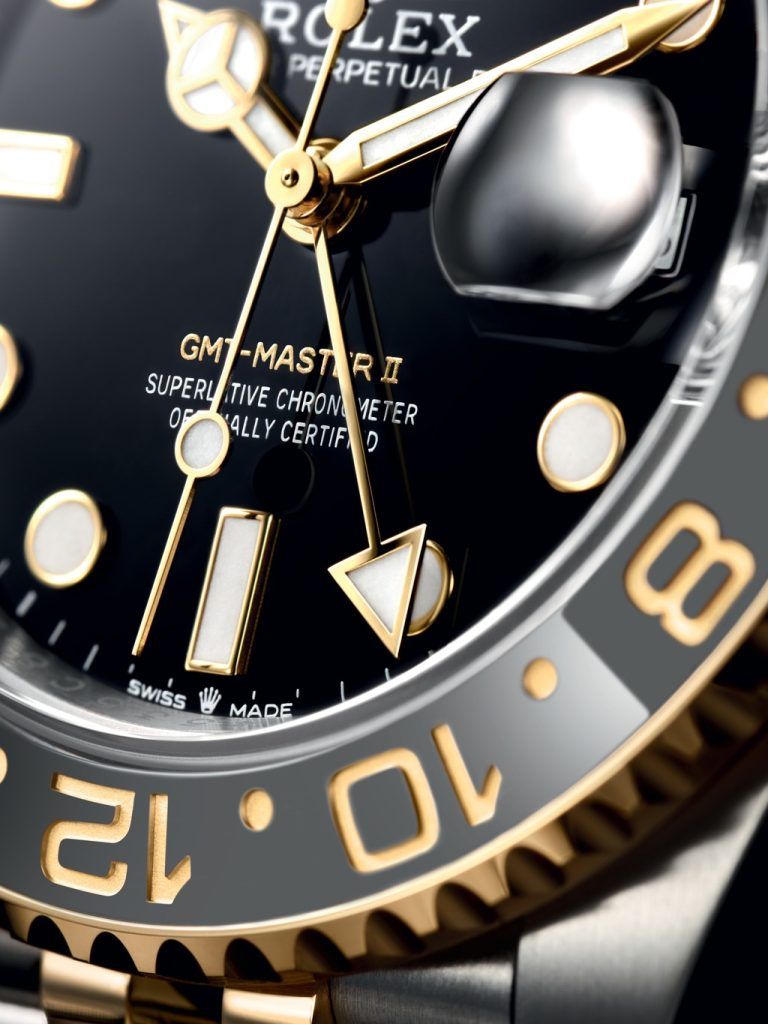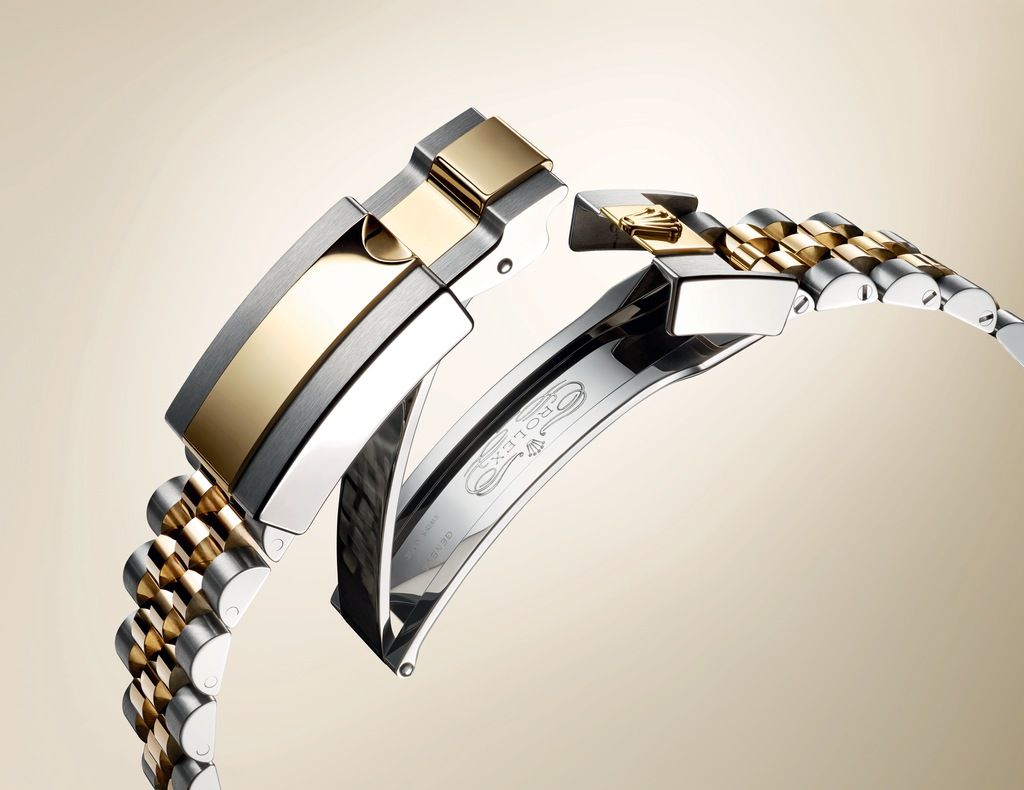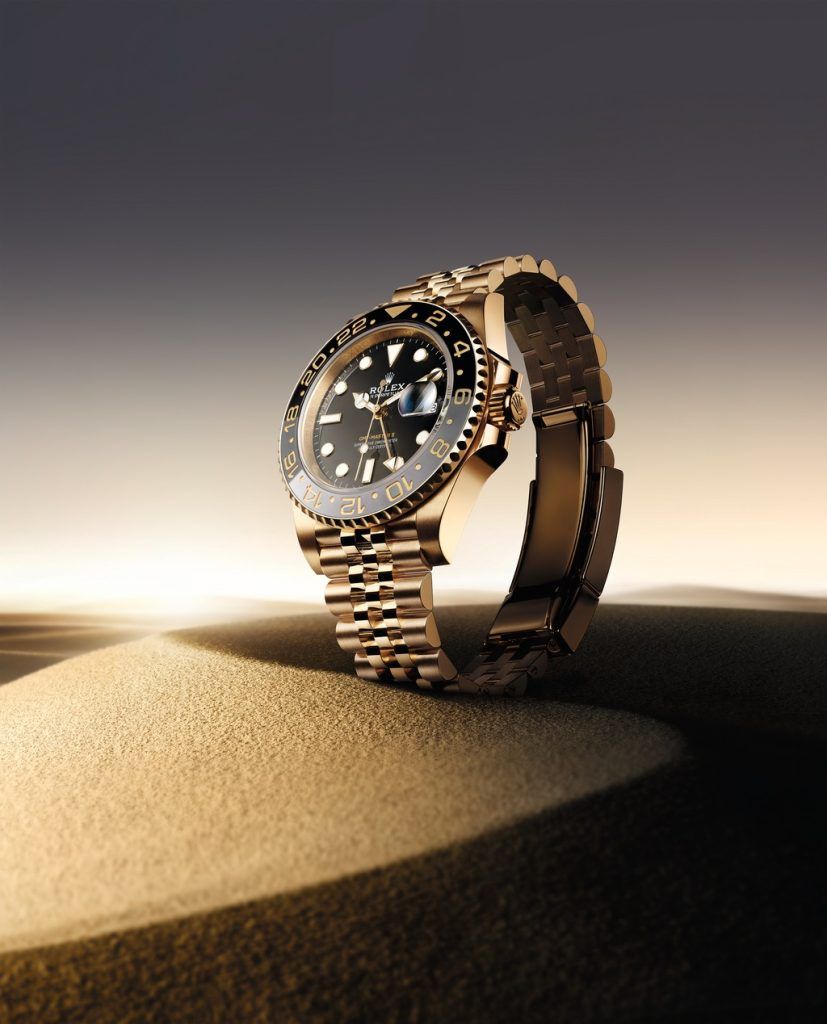With an emblematic design that has made it an icon of horology since it was first launched in 1955, Rolex’s GMT-Master has continuously evolved through the years to embrace modernity. It has seamlessly integrated technical advances that have cemented its status as the GMT watch of choice – always in step with the times.
A New Age of Travel
When Rolex launched the GMT-Master in 1955, the world was rapidly changing: distances seemed shorter and time faster. Rapid developments in civil aviation were particularly spectacular, with the arrival of long-haul flights making it possible to cross oceans and continents non-stop. The GMT-Master provided a tool for navigating between different journey time points. With its dedicated 24-hour hand and graduated, rotatable two-colour bezel, it enabled those who constantly travelled in different time zones – airline pilots, ships’ captains, navigators, international businessmen, and members of the Armed Forces – to tell the time in two time zones, at a mere glance.
The iconic timepiece takes its moniker from Greenwich Mean Time (GMT), which marks mean solar time at the Royal Observatory in Greenwich, London – historically the location of the official prime meridian used for calculating longitude and determining different time zones around the world. Until 1972, GMT was the international time standard and an indispensable reference point for the aviation industry in particular.
Today, in watchmaking, ‘GMT’ describes a function that allows a watch to show the time in two different time zones at once, by way of the traditional display as well as an additional 24-hour hand combined with the corresponding graduation on the bezel.
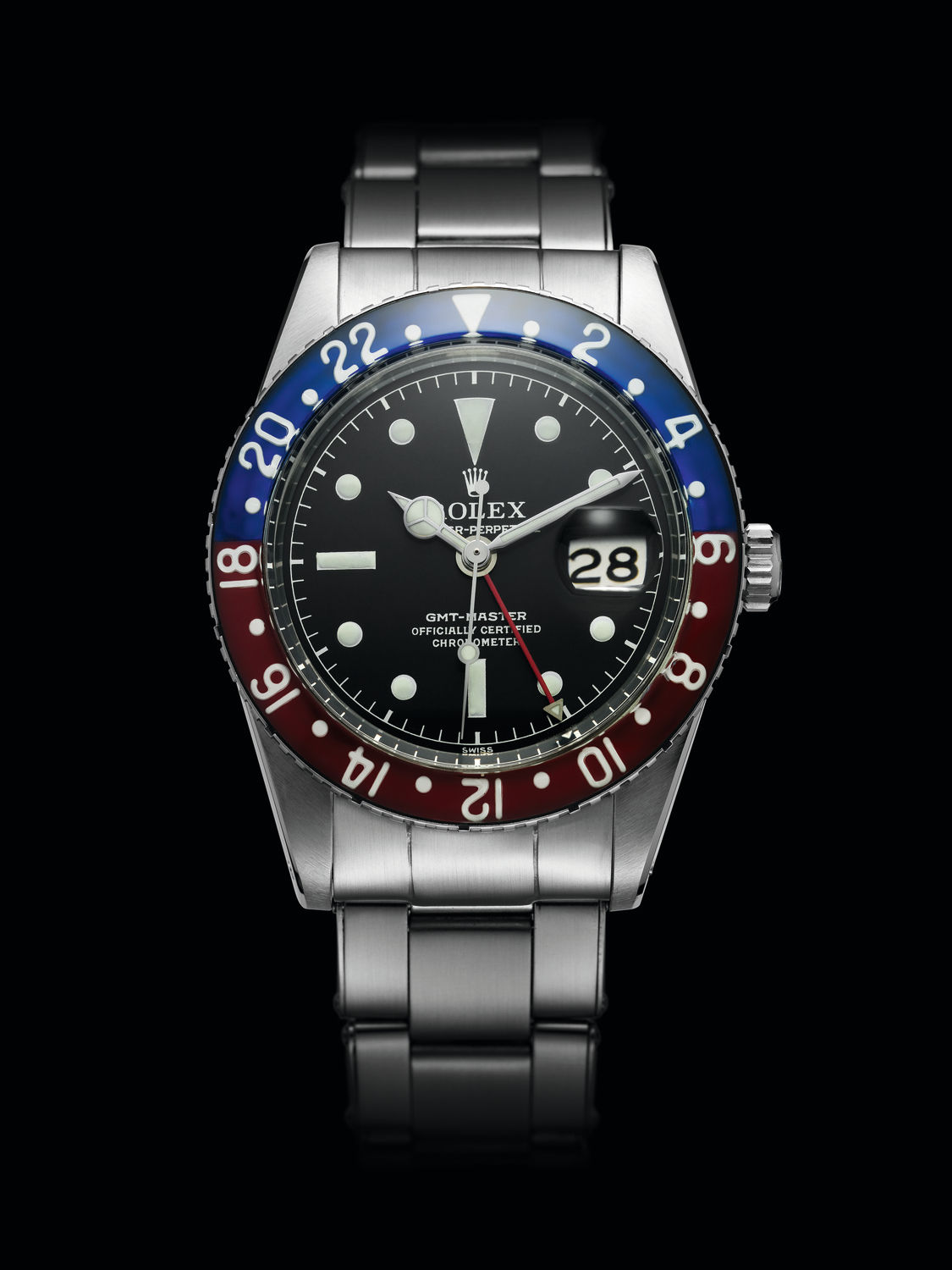
The Ultimate Cosmopolitan Watch
Often referred to as the ultimate cosmopolitan watch – designed for professionals crisscrossing the globe – the GMT-Master II is the successor to the GMT-Master, the original model launched in 1955. Over the years, the GMT-Master came to epitomise the aeronautical watch, accompanying many groundbreaking aviation achievements. It has gradually triumphed in other realms, too – on the wrists of globetrotters, explorers, and adventurers.
A true ‘tool watch’, the GMT-Master possesses two distinguishing features that make it a reference among GMT-function models and an instantly recognisable timepiece. It includes an additional large, triangle-tipped hand that circles the dial in 24 hours. This hand points to the 24-hour graduation on the rotatable bezel which, at the model’s launch, was two-coloured to distinguish between the hours of the day and night: red for daytime, and blue for nighttime. By setting the bezel, the watch could simultaneously display a second time zone, allowing the wearer to see the time in two different parts of the world at the same time.

Evolution Of The GMT-Master
The GMT-Master has continued to evolve and adapt to the needs of a perpetually changing world. In 1982, it was equipped with a new movement, enabling the hour hand to be adjusted in one-hour increments – independently of the other hands and without stopping the watch. A name change accompanied this major evolution: the GMT-Master fitted with this optimised movement became the GMT-Master II. At its launch, it featured a burgundy and black bezel insert, a combination exclusive to the new model. The GMT-Master and GMT-Master II co-existed until the year 2000.
Prior to that, the 1960s, which saw a surge in air traffic, also marked a significant point in the evolution of the GMT-Master. Booming economic growth around the world meant that travelling by air was becoming an essential means of long-distance transportation. At the start of this crucial decade in aviation history (1959), Rolex signed a partnership with Pan American World Airways (Pan Am), with the GMT-Master becoming its official watch. Pan Am pilots were equipped with GMT-Master watches – even appearing in advertisements for Rolex, helping to make the model an emblem of the aeronautical word.
That year also marked a turning point in the technical journey of the GMT-Master. The 24-hour graduated bezel insert, previously made of Plexiglass, was now produced in anodised aluminium to make sure its surface is more durable, and a winding crown guard was added as an integral part of the middle case. More robust than ever, this tool watch would continue to receive upgrades and enhancements over the years to deliver increasingly impressive performance.
In 2005, the GMT-Master II received a significant update with the introduction of the first bezel insert made of ceramic on a Rolex watch. This hi-tech ceramic is extremely hard, virtually scratchproof, and its colour is unaffected by ultraviolet rays. In addition, thanks to its chemical composition, it is inert and cannot corrode. Initially entirely black, this component was subsequently produced in various two-tone combinations – immortalising the iconic design of the original GMT-Master.
In 2013, the first two-colour monobloc Cerachrom insert was unveiled – in blue and black. It represented a triumph of engineering and applied research. The following year, Rolex presented a red and blue Cerachrom insert. Producing this particular colour combination – a nod to the original watch – was a technical tour de force, as these two tints are extremely difficult to obtain on a single ceramic component.
An unexpected reinterpretation of the GMT-Master II was revealed in 2022. This new version – with a green and black Cerachrom insert – stood apart from others in the range for having its winding crown on the left side of the case. The date window was also uniquely placed at 9 o’clock. To this day, this GMT-Master II is the only Rolex watch to feature such a unique configuration.
Following on from the watches in 18-carat yellow gold and the yellow Rolesor variants presented in 2023, Rolex launched two new versions of the GMT-Master II in 2024 – both also equipped with a Cerachrom bezel insert in grey and black ceramic. Made of Oystersteel, they offer more discreet colour tones, subtly revealing their personality by way of a green 24-hour hand. One fitted with an Oyster bracelet and the other sporting a Jubilee bracelet, these two new watches perpetuate the legend of the GMT Master.
The black lacquer dial bears the inscription ‘GMT-Master II’ in green. This colour also features on the 24-hour hand which, like a beam of light, calls attention to Rolex’s connection with the world. Displaying much more than just an alternative time zone, the hand points to another location that resonates with the wearer – a reminder of the emotions that accompany each traveller.
Over the course of nearly seven decades, Rolex’s GMT-Master has not only adapted to the changes and advances in the world we live in – claiming a slice of aeronautical history in the process – but also earned its rightful place as an icon of horology.
This was brought to you in partnership with Cortina Watch. For more, visit Cortinawatch.com.



